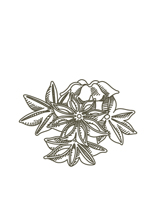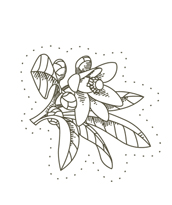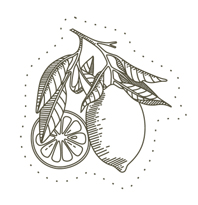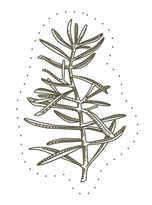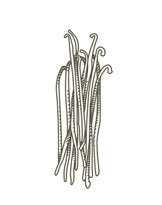Mugwort/Armoise
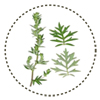 Mugwort/Armoise (Artemisia vulgaris L.)
Mugwort/Armoise (Artemisia vulgaris L.)
It is a tall herbaceous perennial plant growing 1-2 tall, with a woody root. The leaves are 5-20 cm long, dark green, pinnate, with dense white tomentose hairs on the underside. The rather small flowers (5 mm long) are radially symmetrical with many yellow or dark red petals. It is native to temperate Europe, Asia, Northern Africa and Alaska and is naturalized in North America where some consider it an invasive weed. Mugwort oil contains thujone, which is toxic in large amounts or under prolonged intake. Mugwort herb contains a very small percentage of oil, so is generally considered safe to use. In the European Middle Ages, mugwort was used as a magical protective herb. Mugwort was used to repel insects, especially moths, from gardens. Mugwort has also been used from ancient times as a remedy against fatigue and to protect travelers against evil spirits and wild animals. Roman soldiers put mugwort in their sandals to protect their feet against fatigue. The leaves and buds, best picked shortly before the plant flowers in July to September, were used as a bitter flavoring agent to season fat, meat and fish. Its sagelike, spicy flavor makes a delicious seasoning for meat dishes. It has also been used to flavor beer before the introduction of or instead of hops. Liqueurs based solely on anise (Pernod, Pastis) could establish themselves as alternatives for absinthe. As wormwood taste intensively bitter, it is almost impossible to incorporate quantities sufficient for thujone poisoning by accident. Even if the thujone is separated from the bitter absinthin by distillation, the resulting product is still too bitter to drink without sugar. Wormwood-flavoured wine (vermouth) contains only traces of thujone. The mugwort plant contains essential oils (such as cineole, or wormwood oil, and thujone), flavonoids, triterpenes, and coumarin derivatives. It was also used as an anthelminthic, so it is sometimes confused with wormwood (Artemisia absinthium). The plant, called nagadamni in Sanskrit, is used in Ayurveda for cardiac complaints as well as feelings of unease, unwellness and general malaise. Practitioners of natural medicine continue to use the herb as a remedy for disorders of the digestive and reproductive systems. It can also be used to treat intermittent fevers with chills and shivering and is added to healing baths to ease discomfort from eczema, gout and arthritis.













